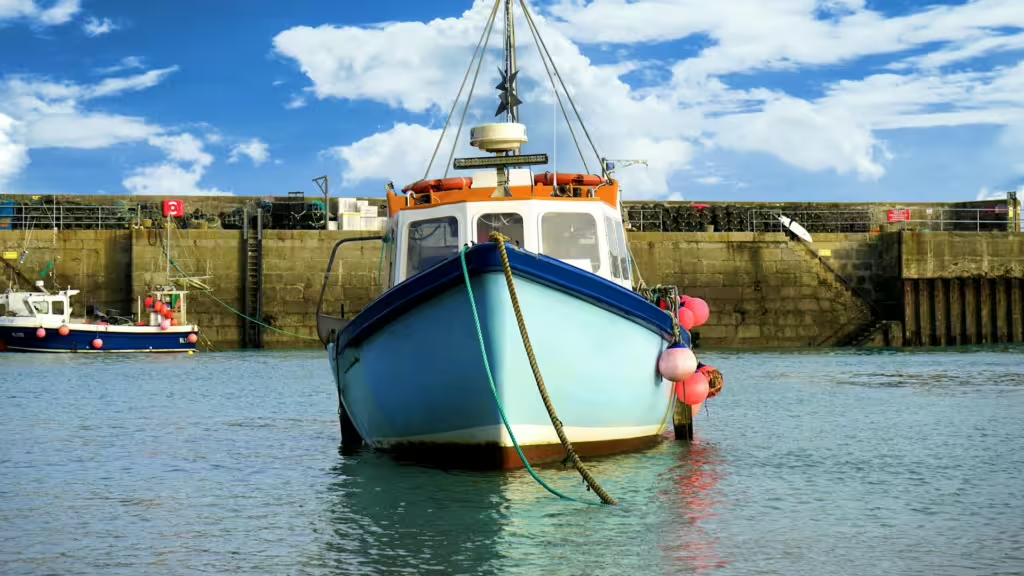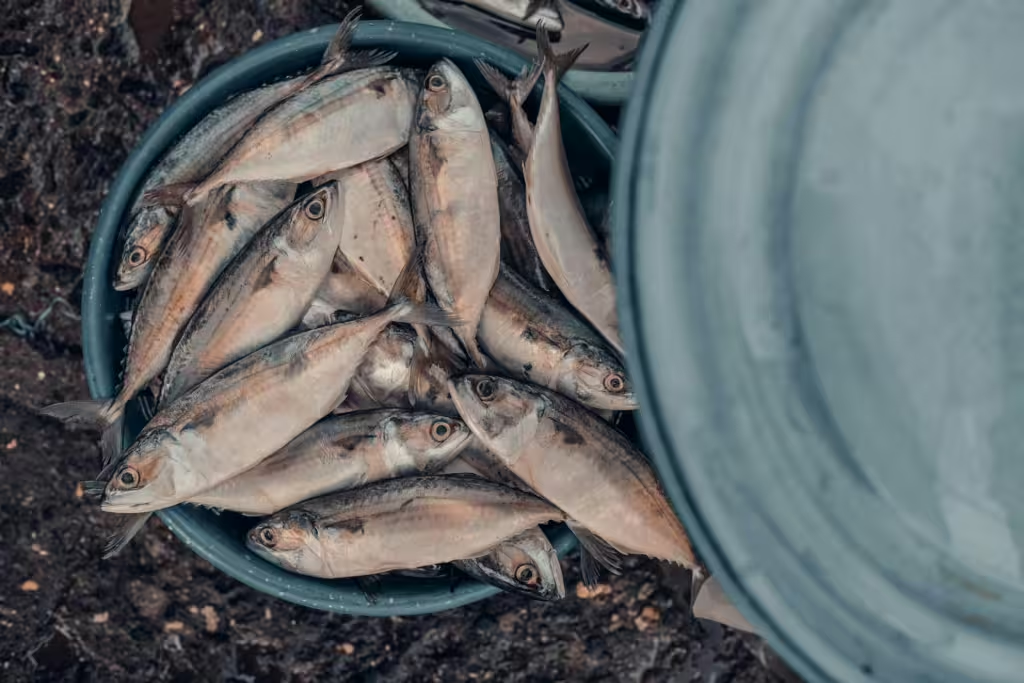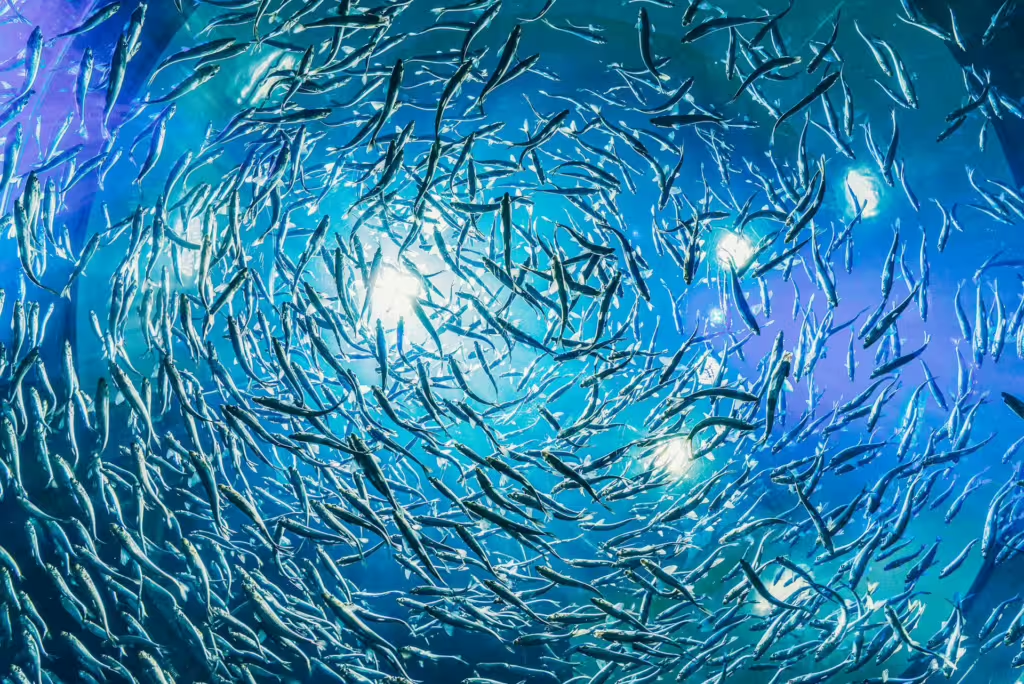Human beings love to eat fish. If one were to look at the fish counter at the supermarket, the sushi menu at the spot down the street, or walk through Fulton Fish Market in New York City, they could see the inescapable evidence of this. If that person were to look past the individual fish however, into the clear but lifeless eyes of the animals they may, at that moment, be planning to eat for dinner, they might notice something else; the sheer volume of seafood housed in that particular place.
Yes, we love fish so much as a species that we are overfishing them into oblivion. Of all the many threats that humanity poses to marine ecosystems in the modern day, nothing is as unchecked and unabashedly human, as overfishing. Rampant overfishing has already had catastrophic effects on acres of marine ecosystems, it has greatly impacted oceanic biodiversity, threatens food security the world-over, and is having rippling consequences for the economic stability of many coastal communities.
Fish stocks the world over have been affected by this rampant overfishing. From popular species like tuna and salmon to lesser-known tragedies like that of the ill-fated orange roughy, the impact of overfishing can be seen just about everywhere. There are additional problems for non-fished species as well, as bycatch—the unintentional capture of non-target species—has endangered numerous marine creatures over the years.
In this article, we will venture out to sea in order to explore the true consequences behind this dire situation. On this journey we will talk about the various species that have been affected by overfishing. Finally, we will highlight why this incredibly old practice needs to be made more sustainable; not only for the fishes’ sakes, but for that of our own species.
Tuna: The Global Staple in Jeopardy
Whether it’s from a can or served in a sushi roll, people love to eat tuna. This oceanic dynamo is among the most widely consumed fish on the planet. It is prized for its flavor, nutritional value, and its culinary versatility. Yet, like so many other delicious fishes, overfishing has pushed several tuna species, including the highly-prized bluefin tuna, to the very brink of extinction.
Why Tuna is Overfished
Global demand for sushi, sashimi, and canned tuna has skyrocketed in the last century. This has continued to drive the wheels of business, making industrial-scale tuna fishing almost a necessity. As a result, the industry itself has grown by leaps and bounds. Advanced technologies, including purse seine nets and longlines, now enable fleets to catch vast quantities quickly even more quickly. The result is that already pressured fish stocks are being depleted so fast that they cannot possibly recover fast enough to meet demand.
Consequences
Atlantic and Pacific varieties of bluefin tuna have been most affected by our inexhaustible appetite for tuna salad. What most people fail to realize, even as they’re placing another sashimi into their mouth, is that these fish take years to mature. Overfishing, therefore, greatly affects their reproductive capacity. Meanwhile, the bycatch of sharks and sea turtles that get caught up in tuna nets, are also affected, endangering the marine ecosystems that get caught in the wake of these fishing boats.
Salmon: Wild vs. Farmed Debate
Salmon is yet another deliciously popular fish. It is a versatile ingredient, one that can be eaten raw, steamed, broiled, fried…you get the picture. The point is, salmon face significant threats due to overfishing and several other human-derived threats.
Wild Salmon Under Pressure
Wild salmon, especially Chinook and Sockeye species that are native to the Pacific Ocean, are typically overfished due to high consumer demand. At the same time, factors like habitat loss, climate change, and pollution further diminish their populations. The problem here is similar to the plight of the bluefin tuna. Salmon reproduction is a complicated affair that involves tremendous hardship and long journeys over hundreds of miles. The existing salmon population simply cannot sustain our avarice and it has no time to make up its numbers while we continue to overfish it into a watery grave.
Farmed Salmon’s Impact
While farmed salmon might sound like a solution, the toll it takes on the environment is nearly as concerning as the issues with overfishing. Fish farms don’t exist in a vacuum and they often inadvertently spread diseases to wild populations. At the same time, these farms also tend to pollute nearby waters, indirectly contributing to the already destructive effects of overfishing.

Fluke and Halibut: Flatfish in Decline
If you live in an area where flounder and fluke can be fished recreationally, then you already know that there is a problem with the current population. Flatfish species like fluke and halibut have always been popular choices for seafood lovers because of their delicate flavor and texture, but their populations are under significant strain in the modern age. Overfishing, pollution, and climate change are making things hard for these highly-specialized fish. Their rapid decline is a critical concern for commercial fisheries and recreational anglers alike.
Fluke (Summer Flounder)
Fluke, commonly referred to as summer flounder, has been a staple in seafood markets along the U.S. East Coast for the better part of a century. It’s versatile, tender, delicious, and up until about a decade ago, was fairly plentiful. Sadly, its culinary popularity has come at a great cost. Over the years, intense fishing pressure, combined with habitat degradation, and a continuous rise in ocean temperatures, has led to unsustainable harvesting rates, particularly in the Atlantic Ocean.
The fluke’s migration and breeding patterns has also changed, which has made it harder for local populations to recover even as fishing quotas are being constantly adjusted. While regulatory measures, such as size limits and catch quotas, have been introduced to manage fluke stocks, problems remain. For one, enforcement of these laws remains a challenge and angry anglers often do what they can to skirt past regulations, just so they can get a piece of the pie that commercial fisheries have greedily overtaken.
Halibut
Halibut is a sort of giant fluke that lives in colder, deeper waters. This flatfish is most well-known for its firm, flaky flesh and is highly sought after in international seafood markets. However, like many fish that are endangered by their own deliciousness, the halibut’s unique life cycle is a serious contributor to their vulnerability. With a slow growth rate and delayed maturity—some halibut take over a decade to reproduce; which means that overfishing cuts them as deeply as a well-honed filet knife.
Atlantic halibut populations have already been severely depleted since the beginning of the 20th century and while Pacific halibut have fared a little better, they are both struggling to recover. Though strict management measures are taking pressure off the fish in terms of overfishing, both varieties still face pressures from illegal, unreported, and unregulated (IUU) fishing.
Environmental changes, such as ocean acidification and habitat destruction, further threaten halibut populations, particularly when they affect spawning grounds and juvenile development. Bycatch in trawl fisheries has also resulted in the accidental capture of juvenile halibut, which are unceremoniously discarded back into the sea. Sadly, these fish rarely survive the experience.
Efforts to protect fluke and halibut have included stricter fishing regulations, habitat conservation programs, and public awareness campaigns, but the problems persist. Without global cooperation and stronger enforcement of existing laws, these iconic flatfish will likely continue to decline, affecting everything that shares a food chain with them; humans included.
Orange Roughy: A Deep-Sea Tragedy
Orange roughy, also known as “slimehead” in some circles, is a symbol of the catastrophic consequences of overfishing. These deep-sea fish, once marketed as a sustainable choice amongst the offerings of flounder, tilapia, and salmon, are now largely unavailable. This is not because of climate change or pollution (though those certainly didn’t help matters) but is due to decades of exploitation at the hands of greedy fishermen.
Why Orange Roughy is Unique
When left to their own devices, orange roughy have an exceptionally long lifespan. Some individuals have been recorded living over 150 years. This lifespan comes with caveats, however, as orange roughies grow and reproduce very slowly, making their populations highly susceptible to overfishing. This seems to be something of a trend when it comes to the types of fish humanity loves to consume, doesn’t it?
The Plight of Orange Roughy
During the 1970s and 1980s, industrial fishing trawlers discovered a veritable treasure trove of orange roughies. The discovery of several dense gatherings of the fish near underwater seamounts led to a sort of underwater gold rush. The result was that these poor fish were harvested at unsustainable rates, which led to a dramatic decline in the population. Today, the fate of the remaining orange roughy serves as a cautionary tale about the consequences of exploiting a slow-growing fish species in so unceremonious a fashion.
Bycatch: The Unseen Casualties
Bycatch is a term used to refer to the unintended capture of non-target species during the course of commercial fishing operations. Basically, it means that other fish, marine mammals, sea turtles, and seabirds, get caught up in fishing nets accidentally. The problem with this is that the process almost always kills or injures the unfortunate bycaught critters, many of which also happen to be endangered species themselves.
Fish Endangered by Bycatch
- Sharks: Sharks are often caught on tuna longlines. At the same time, many shark species are killed for their fins or discarded.
- Cod and Haddock: These species of fish are frequently caught alongside fluke and halibut and can even be found in crab traps from time to time.
- Rockfish: Juvenile rockfish often fall victim to trawling nets, which vastly impacts their populations.
Marine Mammals and Turtles
Bycatch affects marine mammals like dolphins and seals, as well as sea turtles
Other Overfished Species
Though not bycatch themselves, other, less popular fish species are also affected by overfishing in this day and age.
Swordfish
Due to their high market value and demand in gourmet dining, swordfish are an iconic example of modern overfishing. These animals are specifically targeted by global fisheries, but the increased demand for swordfish steaks has led to severe overfishing in both the Atlantic and Mediterranean. Bycatch also affects swordfish in some ways as well, which only compounds the problem. Juvenile swordfish are particularly vulnerable to this, which stops them from growing to reproductive age. Thus, the population cannot replenish in a meaningful way.
Grouper
Groupers are large-mouthed fish found primarily in tropical and subtropical waters. This overexploited species is revered for their rich flavor and firm texture, which makes them quite popular in Asian and Mediterranean cuisines. Unfortunately, their impressive size means that groupers also have slow growth rates. They mature late and spawn in predictable places that savvy fisherman gleefully exploit, heedless of the damage they are doing by killing the golden goose.
Conservation measures such as marine protected areas and size limits have helped to stem the damage against the swordfish and grouper, but illegal fishing and high market demand continue to threaten their populations. In the meantime, coordinated international action is needed to ensure stricter enforcement and better protection of affected habitats and breeding zones. There also must be an emphasis on education, so that people, fishermen most of all, make more sustainable choices when it comes to catching and eating seafood.

Why Overfishing Persists
High Consumer Demand: Seafood’s popularity continues to drive overfishing practices, especially for high-value species like tuna, salmon, swordfish, and grouper.
Technological Advancements: Modern fishing fleets can locate and catch fish more efficiently than they have in any other point in human history. With such tools at their disposal, what was once a very difficult job has become that much easier. That is, until all the fish are gone, and all the radar in the world will be unable to locate them.
Lack of Regulation: In many regions, poor governmental enforcement and regulation of fishing quotas and illegal practices only serves to worsen the issue of overfishing.
Global Trade: The international seafood trade is growing with the global population, further exacerbating the immense pressure on local fisheries to meet demand.

True Investigator Says…
As you can see, the crisis of overfishing is as much an issue now as it was when the orange roughy nearly went extinct. This persistent issue not only threatens the delicate balance of marine ecosystems, but the livelihoods of communities whose diets are also reliant on seafood. If something is not done and soon, iconic species like tuna, salmon, fluke, and grouper will face a bleak future. The only actions we can take at this point is to make more sustainable choices about what we eat. That way, we can ensure that future generations inherit thriving oceans teeming with life, rather than barren fathoms of brittle, sunken bones.
Discover more from TrueInvestigator
Subscribe to get the latest posts sent to your email.

